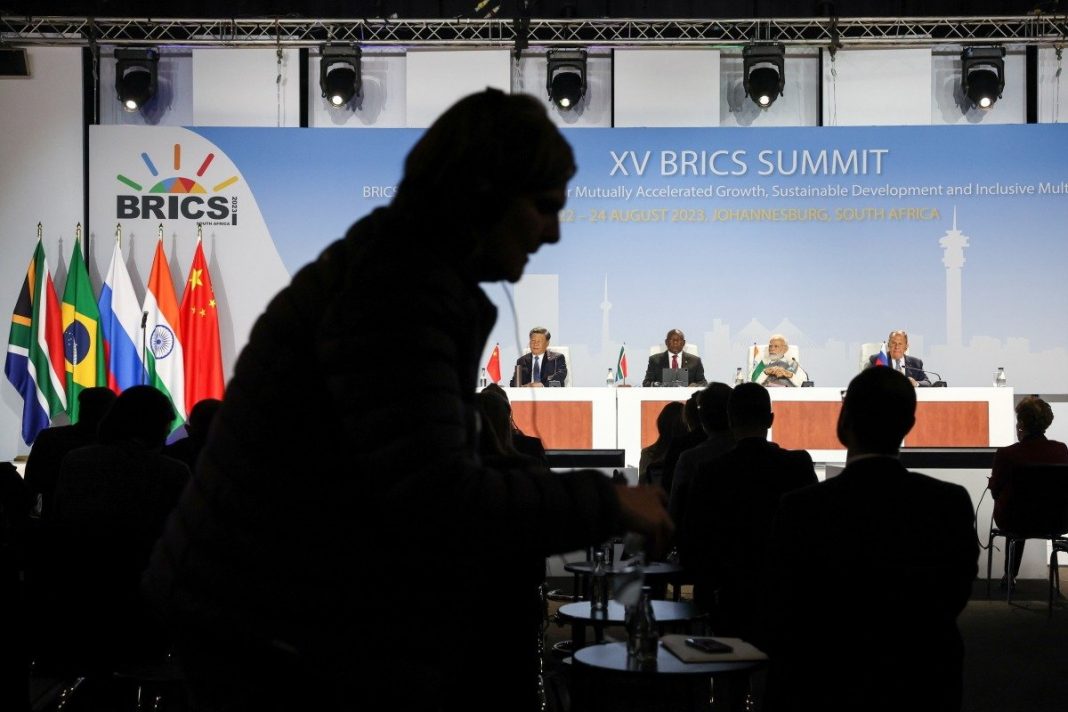Recently, the BRICS theme has become relevant again. As of January 1, 2024, the founding countries of the international association – China, Russia, Brazil, India and South Africa – were joined by the UAE, Egypt, Ethiopia and Iran. Saudi Arabia, previously announced as a new member of BRICS, is still “considering” a proposal to join the association. Another invited country, Argentina, however, immediately responded to BRICS with an immediate rejection after new president Javier Milay, who took office, canceled his predecessor’s plans. Even during the election campaign, he made it clear that he would steer the country’s foreign policy away from China and Brazil: “Our geopolitical line is linked to the United States and Israel. We are not going to ally with the communists.” And Argentine Foreign Minister Diano Mondino said BRICS has more to do with political alignments than with the benefits the bloc could bring to trade between countries.
Nevertheless, the trend of inviting new members continues. Developing countries are embarking on their BRICS journey in several columns – African, Middle Eastern, Asian and Latin American. This is eloquently illustrated by a series of recent high-level international meetings and visits.
In this piece Ascolta analyzes the prospects for further expansion of BRICS, as well as the strengthening of the community’s influence on geopolitical processes and the formation of a conditional “anti-Western” bloc.
This Content Is Only For Subscribers
What is BRICS?
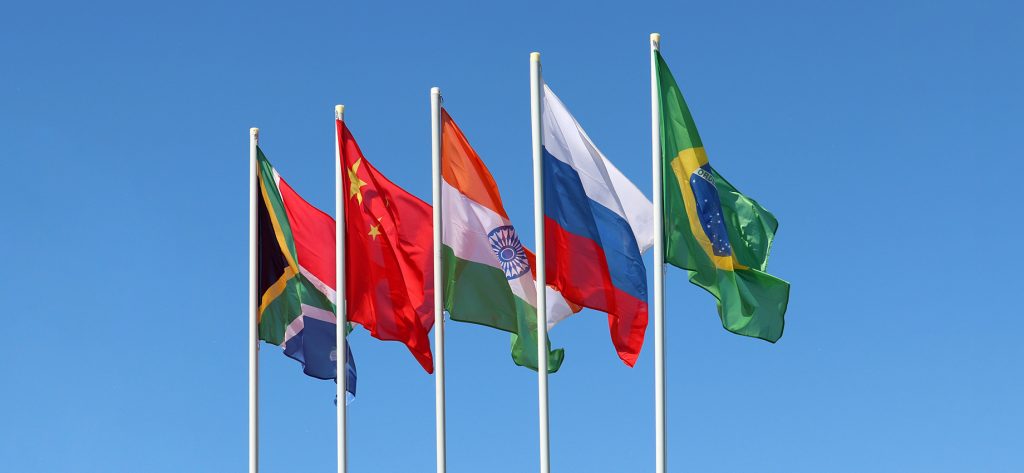
The term BRIC predates the organization itself. This abbreviation was introduced in 2001 by Jim O’Neil, an English baron and professor emeritus at the University of Manchester, in an analytical note for Goldman Sachs. This is how he labeled the four countries (Brazil, Russia, India, China) that were considered the fastest in terms of economic development. According to his estimates, by 2050 these countries could become the dominant economic systems in the world. The consonance of the group’s name with the word brick is not accidental. It emphasizes that the development of these countries will largely underpin the future growth of the global economy.
The BRIC format meetings were first held in 2006: in June, the economy ministers of the four countries held talks at the St. Petersburg Economic Forum, and in September, the foreign ministers of Russia, Brazil, China and India’s defense minister held talks at the UN General Assembly session in New York. In July 2008, a brief meeting of the heads of state and government of the commonwealth was held in Toyako, Japan, as part of the G8 summit, where the leaders of Brazil, China, India and Russia agreed on the need for a summit and approved the venue for the next meeting. The first BRIC summit was held in June 2009 in Yekaterinburg. At that time, the goal of the association was defined as “the development of consistent, active, pragmatic and open dialog and cooperation between countries,” and in 2010 South Africa joined the association and the letter “S” was added to the BRIC abbreviation.
The group’s greatest achievements were in the financial sector. The countries agreed to pool $100 billion in foreign exchange reserves that they can lend to each other in case of emergencies. This mechanism became operational in 2016 with the establishment of the New Development Bank, which has lent $32.8 billion dollars to date, in stark contrast to China, for example, which has lent about $1 trillion dollars to other nations on a bilateral basis. The new financial structure has become almost a copy of the World Bank and also provides funding for water, transportation and other infrastructure. The NDB conducts 70% of all transactions in dollars. It has no dominant shareholder. Beijing has agreed to equal shares for each of the BRICS members, which New Delhi had advocated. Curiously, the bank is headquartered in Shanghai but is headed by an Indian and two Brazilians. After Russia’s full-scale aggression against Ukraine began, the New Development Bank stopped working with Russia because it complies with international restrictions and does not want to be subject to sanctions.
Trade between the countries is also developing dynamically. Bloomberg estimates that from 2017 to 2022, trade between the first five members grew 56% to $422 billion. Economically, Russia’s natural resources and agricultural products from Brazil make them natural partners for Chinese demand. India and China, on the other hand, have weaker trade ties, partly due to their geopolitical rivalry and bitter border dispute. Another reason for the increase in trade between BRICS members has been the sanctions against Russia, which have dramatically increased its trade with China and India. However, this has also created problems: Russia has accumulated a huge stock of Indian rupees, which Russian exporters do not know what to do with. China, in turn, would be happy if a significant part of the trade turnover within the framework of the association was in yuan.
Another economic problem is the low investment attractiveness of the BRICS. This is caused by geopolitical changes and different economic trajectory of the member countries. As Bloomberg notes, sanctions imposed by the US have closed Russia to most foreign investors. At the same time, some of China’s high-tech industries are also under sanctions or facing potential investment bans. In addition, Beijing is now decoupled from other emerging markets and is experiencing a structural economic slowdown. Brazil’s economy has also slowed markedly after the global commodities boom of a decade ago. South Africa has been suffering from fan blackouts for years as the state-owned utility cannot produce enough electricity. India stands out from the crowd and its economy continues to grow. Investment banks are now comparing the country to China 10-15 years ago, but it is not clear whether it can follow China’s production-based model.
The main communication form of the BRICS member countries is the annual summit, where the leaders meet. There, participants discuss current economic and regional political issues and develop new trade and financial strategies. BRICS cannot be called an international organization, as it has no charter, charter or any other fundamental document defining its activities. That is why it is more appropriate to use the word “association” when referring to the BRICS. The BRICS should not be perceived as a formal alliance, an organization with strict discipline, where “one for all and all for one”. It is not NATO, where there is the famous fifth article on collective defense, nor is it the European Union, where many decisions are taken by consensus. It is rather a discussion platform. After all, the BRICS countries will hardly ever be bound by mutual security guarantees, and a full-fledged alliance between some of its members is very difficult to imagine. And yet, the BRICS members represent more than 42% of the world’s population, account for more than a quarter of the world’s gross domestic product (GDP) and 18% of trade. It is these indicators that largely make clear the importance of this association for the geopolitical arena.
BRICS: two approaches
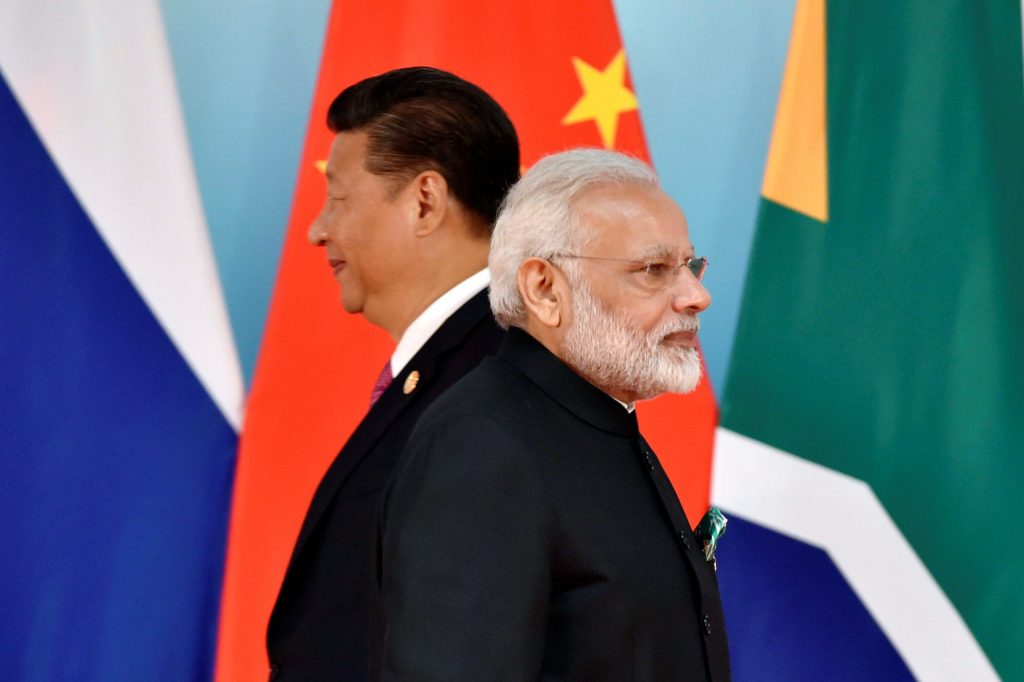
As Jim O’Neill, one of the former heads of Goldman Sacks and a former British finance minister, admits nowadays, he never meant for a political subtext to emerge behind the informal meetings of the leaders of Brazil, Russia, China and India (South Africa joined later). BRICS was created to coordinate the international efforts of the world’s most promising economies. However, as the BRICS was being created, the contours of the different approaches of the BRICS members began to emerge.
One of them, followed by Russia and partly by China, is that BRICS should become an alternative to the Western world order. The other approach, espoused by India, Brazil and South Africa, is based on an understanding of BRICS as more of a tactical alliance whose membership can be used to bargain with the West and solve their own domestic problems. There is no doubt that in the Beijing-Moscow duo, the first voice belongs to China, which wants to increase its geopolitical weight in order to move closer to world dominance or at least share it with the United States. Along the way, it needs to create conditions for economic growth amid domestic economic problems, demographic problems and technological dependence on the West. China’s attempts to assume the role of BRICS leader, based on the fact that for a long time China’s GDP was more than four times that of all other members of the grouping combined, are being thwarted by India, which has emerged as a counterweight to Beijing. It recently overtook China in population and is now stiffly opposing Beijing’s efforts to build infrastructure abroad. BRICS has not officially endorsed China’s “One Belt, One Road” project. This is partly because India objects to such projects in disputed territory belonging to Pakistan, its neighbor and main rival.
With the onset of Russia’s full-scale aggression against Ukraine, much in international relations, global trade and security system has been reset or subjected to total reassessment. Today, BRICS is necessary for Russia to overcome the isolation of the West due to Russia’s aggression against Ukraine. In addition, the association can become an effective tool for economic restructuring in the face of Western sanctions.
Brazil, India and South Africa, unlike Russia and China, have strategic partnership relations with the United States and the West. It would seem to be a win-win situation for them: these countries get an opportunity to develop ties with both the West and the East, with both America and Russia. But for Brazil, India and South Africa, the current situation is also a serious challenge. The West demands that they stop sitting on two chairs and join the sanctions war – the sooner the better.
The very existence of this association, originally conceived to gain greater independence from Western institutions, to have its own bank and settlement system in national currencies so as not to depend on the dollar, contradicts the key idea of the sanctions war. After all, its meaning is that Moscow and Beijing should not have any loopholes that would allow them to escape restriction. And BRICS is not a loophole, but an entire loophole. Therefore, a different reading of the basic idea of BRICS by its members is inevitable. And if we add to this the internal contradictions between the member countries, it will become clear that BRICS is not a monolith, but rather an informal club of the Global South for interests.
In fact, such contradictions are more than visible: the largest members of the union by population – China and India – are bitter opponents. There are unresolved territorial problems between them, and soldiers of the two countries three years ago forcibly clarified relations in disputed areas in the Himalayas, resulting in dozens of deaths. To limit Beijing’s influence in the region, New Delhi is ready to participate in anti-China alliances with the US and its allies. Beijing, in turn, maintains close ties with India’s worst enemy, Pakistan. Or another example, the relations between newcomers Iran and Saudi Arabia, which is still “thinking” about joining BRICS, the key powers of the Shiite and Sunni worlds, respectively. Tehran also has many contradictions with another new member of the association, the UAE.
Speaking of conflicts and contradictions in the ranks of the expanded BRICS, it is worth mentioning the tensions between Ethiopia and Egypt. Cairo believes that Addis Ababa’s construction of a dam on the upper reaches of the Nile (the largest in Africa) will cause an ecological disaster, and even threatens to use military force to solve the problem. In general, the maximum that can be expected from the BRICS members is an ad hoc alliance on certain issues, as well as a willingness to meet and discuss existing contradictions on the new platform provided by the Global South.
Expansion trend
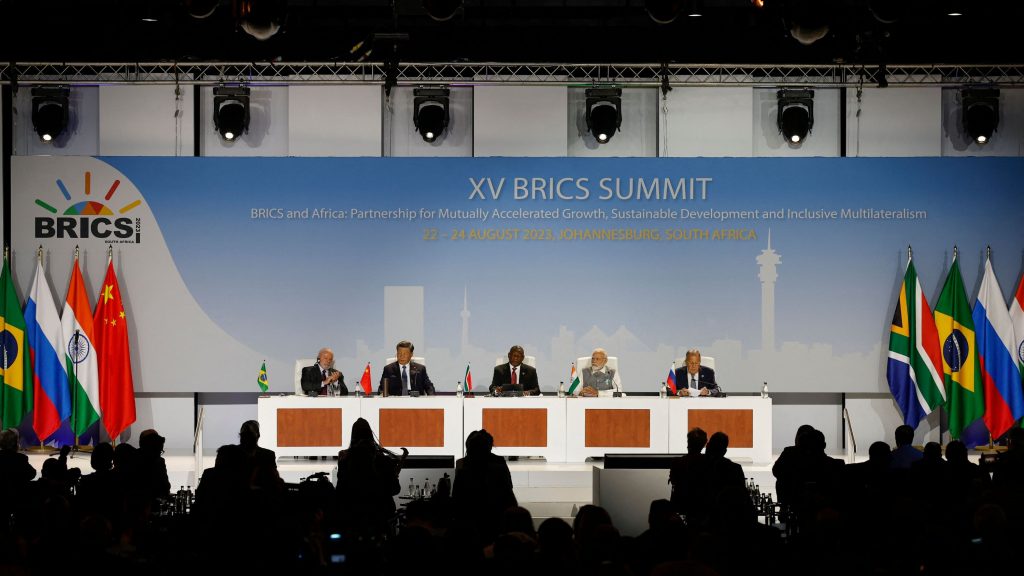
The decision to expand BRICS, taken at the August 2023 summit in South Africa, was the first time since South Africa itself joined the association in 2010. However, it became clear almost immediately that the BRICS member countries have different approaches to this process. Thus, Brazil and India do not support the idea of BRICS’ forced expansion promoted by China, calling for stricter rules of admission to the organization, and warn against attempts to turn it into a global anti-Western coalition – “a counterweight to the U.S. and the EU”. On the eve of last year’s BRICS summit, which was dubbed historic in narrow “propaganda circles,” India and Brazil once again took a special position.
India was reasonably “hesitant,” fearing that the rise of BRICS would turn the grouping into a mouthpiece for China. Besides, India is a member of the U.S. Quad security alliance in the Asia-Pacific region. And if Beijing tries to force other BRICS members to abandon their non-aligned strategy and join the China-centric camp, tensions within the group will rise.
Brazil worried that enlarging BRICS and giving it an anti-Western “coloration” would not alienate the West, with which it is linked by cooperation in arms production and the possibility of gaining access to European consumers by finalizing a trade agreement between the EU and the U.S.-led Mercosur bloc.
Moscow wanted to use the moment to bring its allies, such as Belarus or Venezuela, into BRICS. However, as a result, it was announced that Argentina, Ethiopia, Iran, Saudi Arabia, Egypt and the United Arab Emirates would be invited to join BRICS and become full members from January 1, 2024. However, as noted above, Argentina categorically and Saudi Arabia “diplomatically” refused to join BRICS. The announced candidates represented a conditional mix of democracies and autocracies, openly anti-Western regimes and countries that support close cooperation with the United States and Europe.
The only interest that unites such different states is to wrest more power from the West in the international order. The old BRICS could theoretically become a pole of world politics, equal to the G7, if it could solve or at least postpone for the future the main contradictions between its members. The new, enlarged BRICS is not capable of this, because it will bring together irreconcilable opponents. But it could become an ideal situational coalition, a platform for a “collective lawsuit” against the West: the key countries of the Global South will take advantage of the situation to bargain for privileges.
The accession of the UAE and Iran, major fossil fuel producers, to the BRICS could provide more opportunities to challenge the dominance of the dollar in the oil and gas trade by switching to a different currency. The concept has been dubbed de-dollarization. Talk of creating a common currency within the BRICS has been going on for a long time. The BRICS members are not satisfied with the fact that all the world’s reserve currencies and financial settlements are almost completely controlled by the West, because this gives the West de facto control over the economies of developing countries. Hence the various ideas of abandoning the dollar in trade and switching to national currencies. However, the BRICS members do not trust each other too much either, so it is not a question of choosing, say, the yuan as a new settlement and reserve currency. BRICS wants to create a collective unit of account – a non-cash financial instrument that will allow to fix the exchange rates of the national currencies of the participants without an “intermediary” in the form of the dollar or other Western currencies and, in theory, to create alternative mechanisms of financial settlements.
However, even on this path there are a huge number of obstacles, economic and political problems that are very difficult to overcome. But the members of the group – old and new – have a new motivation. The West’s swift and decisive imposition of unprecedented sanctions against Russia has frightened many in the Global South. After all, the same thing could happen to them, and none of them have any way to confront the West on an equal footing. The desire to protect themselves from the West’s deadliest weapon – control over their adversaries’ money – may indeed push the BRICS to create their own international financial system. It will also give the West more confidence in these plans, because today, more than ever before, developing countries have reason to fear for the safety of their money. This means that the West will become more cooperative, because otherwise its opponents may indeed deprive it of its most important leverage in the world.
However, the BRICS expansion is still more related to China’s policy and desire to build an alternative world order, pulling the countries of the southern hemisphere into its economic orbit, thus challenging U.S. hegemony. In this, China’s aspiration coincides with Putin’s “dream”, isolated by the U.S. and its allies because of the war in Ukraine, to weaken Washington’s global influence. And in this context, the recent visits to Southeast Asia by Premier Li Qiang of the State Council of China and the President of the Russian Federation were not accidental.
It is worth noting that against the background of China and Russia’s activation in the Southeast Asian region, Kualu Lumpur also decided to join the organization. Thus, Malaysia will become the latest Southeast Asian country to express interest in the bloc. Thailand, Myanmar, Laos and Cambodia have previously expressed a desire to join, while Vietnam and Indonesia are only considering applying. “We have made our decision and we will start formal procedures soon … We are just waiting for final answers from the South African government,” Malaysian Prime Minister Anwar Ibrahim said. In an interview with Qatari TV channel Al Jazeera, he was more definitive about Malaysia’s motives for joining BRICS: “As far as the global South is concerned, we fully support it, we endorse criticism of the US dollar’s dominance in international trade.”
A month earlier, Thailand, a U.S. defense treaty ally, announced its intention to apply for BRICS. The association “represents a South-South cooperation framework that Thailand has long wanted to be a part of”. The issue of Peru’s prospects of joining BRICS was discussed at a meeting between the country’s President Dina Boluarte and Chinese President Xi Jinping. The Peruvian president arrived in China at the head of a large delegation of ministers and businessmen to attend an economic summit. By joining BRICS, Peru wants to boost economic growth. In April, industrial production in Peru recorded an 11.4% year-on-year increase. The result is mainly due to the development of the fishing (+25 percent) and textile (+12 percent) sectors.
At the same time, despite Putin’s visit to Vietnam, Hanoi is still in no hurry to join BRICS. It is possible that the key role in this position of Hanoi is played by the United States, which, incidentally, was not happy about Putin’s visit to the country on the grounds that no country should provide him with a platform to promote his war of aggression in Ukraine. Nevertheless, Vietnam is following the BRICS processes with keen interest. According to Foreign Ministry spokesperson Pham Thu Hang, “Vietnam is always willing to participate and actively contribute to global and regional multilateral mechanisms.” It is unclear to what extent the BRICS topic was part of Putin’s closed-door talks in Vietnam, but the two sides promised to strengthen defense and energy cooperation.
Turkiye also announced its desire to join BRICS. First, on the margins of the G7 summit held in Italy, President Turkiye Erdogan asked Brazilian President Lula to support Ankara’s membership in BRICS, and then Turkish Foreign Minister Hakan Fidan expressed his interest in joining the association: “Ankara would like to become a full member of BRICS,” he explained after diplomatic meetings in China. According to his assessment, this step will help to significantly expand Ankara’s economic opportunities.
The Republic of Zimbabwe is also ready to join BRICS, the state’s Defense Minister Oppah Muchinguri-Kashiri has said. She said the organization offers alternative favorable conditions for free trade with other countries and promotes economic growth based on mutual respect, shared progress and prosperity.
However, the lack of clear principles and criteria for joining the organization has put this process on pause. According to the association, this is necessary to “digest” the newcomers who have doubled the membership of the organization. This is despite more than 30 applications from developing countries to join BRICS. The organization has long been a union of five large and independent regional centers. However, there are more and more countries wishing to join the bloc. The BRICS fears that for this reason, the membership criteria risk being significantly diluted and the organization itself turning into an amorphous community. There are even voices in the BRICS about the need to introduce a “roadmap”, like in the European Union, where a country must first obtain candidate status, then there are long negotiations, during which it is verified that the state meets the necessary criteria. However, it is unlikely to be regulated by such strict requirements as in the case of the EU, where member states transfer part of their sovereignty to supranational bodies.
Naturally, Russia has its own special selection criteria. As Russian Deputy Foreign Minister Sergei Ryabkov said recently: “It is important for us that the countries that want to join BRICS and become our partners do not participate in the policy of illegal sanctions and restrictive measures against other BRICS members, especially against Russia,” he emphasized. However, it is unlikely that such a criterion will become the determining one. Most likely, the decision will be made by consensus, which means that the interests of all BRICS members will be taken into account, which, quite naturally, may not coincide with Russia’s interests in everything.
And while the BRICS are working out the criteria for selection into the grouping, as Bloomberg notes, for both Putin and Xi Jinping, the interest in the BRICS is evidence of their success in resisting attempts by the U.S. and its allies to isolate them more widely because of the war in Ukraine and military threats to Taiwan, the Philippines, South Korea and Japan. And despite U.S. and European efforts to prevent the countries from dealing with Moscow, representatives of 12 non-BRICS members attended the Dialogue-BRICS ministerial session in Russia this June. Among them were “the United States’ worst enemies”-Cuba and Venezuela-as well as Turkey, Laos, Bangladesh, Sri Lanka, Vietnam and Kazakhstan. BRICS plans to invite non-member countries to the summit this October in Kazan. As Bloomberg notes, holding this event alone gives Moscow a chance to demonstrate to the world that it is not in complete isolation. The visit to Moscow of Indian Prime Minister Narendra Modi, who traveled to the Russian capital for the first time since Putin’s aggression against Ukraine, confirms this to some extent.
BRICS countries and Russia’s war against Ukraine
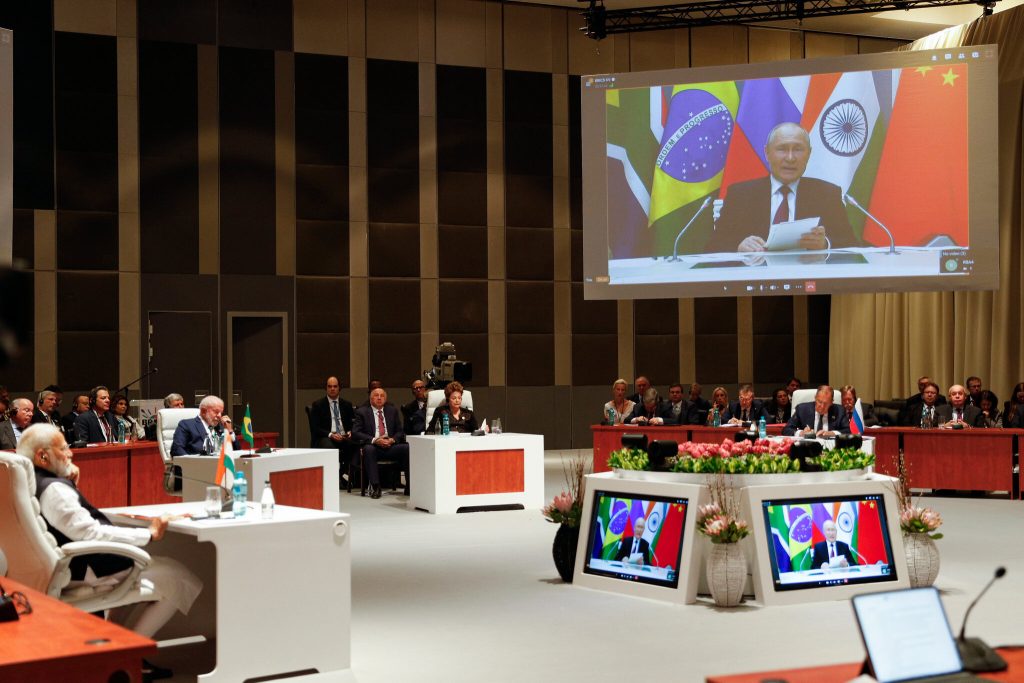
The BRICS countries have generally adopted a neutral stance toward the war, viewing it as a regional issue rather than a global crisis. Thus, Xi Jinping has repeatedly emphasized that China is not a party to the conflict and seeks to maintain a neutral position in the Russian-Ukrainian war. Beijing has never issued statements condemning Russian aggression. Moreover, the Chinese leadership avoids even the word “war,” referring to it as the “Ukrainian crisis” even after the full-scale invasion. Moscow and Beijing are known to have grown significantly closer after Russia’s full-scale invasion of Ukraine. China, despite its claims of “neutrality,” has become a diplomatic and economic pillar for the Russian Federation. In two years of the Great War, China has only once voted in favor of a UN General Assembly resolution naming Russia as the aggressor. The resolution in question was the United Nations Cooperation Decision with the Council of Europe, which the General Assembly adopted on April 26, 2023. On the same day, Xi Jinping spoke by phone with Vladimir Zelensky for the first time since the start of the full-scale invasion. The conversation initiated by the Ukrainian side still remains the only official contact between the leaders of China and Ukraine since February 2022.
At the same time, the Chinese leader does not refuse contacts with Vladimir Putin. In particular, Xi Jinping made his first foreign visit after his third “election” as head of China in the spring of 2023 to Moscow. It was only after the meeting in the Kremlin that he had his first and only telephone conversation with the Ukrainian president, thus emphasizing China’s priority. By the way, after the Russian presidential election, Vladimir Putin also made his first foreign visit after his inauguration in May this year to Beijing.
China continues to ignore Western sanctions and profitably buys Russian oil at deep discounts. Last year, China imported 107 million tons of Russian oil. In contrast, crude oil imports from Saudi Arabia continue to decline. It was the country that was the largest supplier of the fuel resource at the beginning of the war in Europe. Currently, China’s imports of Arabian crude oil total 86 million tons. Cheap Russian energy resources are the cornerstone of a strong strategic partnership between China and Russia. After losing access to Europe’s oil and gas market due to Western sanctions, the growth of Russian oil exports to Asia is helping the Kremlin cash in.
On the eve of the summit in Switzerland, Ukrainian President Volodymyr Zelenskyy criticized the Chinese leadership while on an official visit to Singapore: “We do not expect military support from China. We have never asked them for it….. But we don’t expect China to provide defense support to Russia. This is what we discussed on the phone with the Chinese leader. He promised me that China will stay on the sidelines, will not support Russia with weapons. There is intelligence today that somehow some things are getting into Russian markets through China …. elements of Russian weapons are coming from China,” the Ukrainian president said.
According to U.S. intelligence, it is from China that Russia imports 90% of electronics and 70% of machine tools necessary for the smooth functioning of the Russian military-industrial complex. China supplies Russia, in particular, with a number of critical components for the production of cruise missiles, drones, and military optics for tanks and armored vehicles. After repeated warnings and a visit to the PRC by U.S. Secretary of State Anthony Blinken, Washington imposed sanctions against more than a dozen Chinese companies for supporting Russia’s war in Ukraine. In addition, Zelensky accused Beijing of “making every effort” to discourage other countries from traveling to the Peace Summit in Switzerland. In response, China decided not to send a delegation to Switzerland because Russia was also not invited to the event. Instead, Beijing, along with Brazil, floated the idea of holding a peace conference where both Russia and Ukraine would be represented.
As for Brazil, since the beginning of Russia’s full-scale aggression in Ukraine, it has demonstrated a commitment to neutrality. Its interest was first voiced in June 2022, when then-President Jair Bolsonaro agreed with the United States to coordinate actions in the UN Security Council to promote a peaceful settlement. Bolsonaro’s neutral stance was criticized by Ukrainian President Volodymyr Zelensky. Brazil’s next president, Luiz Inacio Lula da Silva, also did not come out in favor of the Ukrainian “peace formula,” continuing to maintain neutrality, which translated into a refusal to provide Ukraine with weapons. “Brazil is a country of peace. And that is why Brazil does not want any involvement in this war – not even indirectly,” da Silva emphasized. Then during his visit to China, where he met with Chinese leader Xi Jinping, Lula da Silva said that “the United States needs to stop encouraging war and start talking about peace. The European Union also needs to start talking about peace.” He also advocated for a stronger relationship with China: “We have political interests and we are interested in building a new geopolitics.” Washington responded that Lula was repeating Chinese and Russian propaganda. And his statement that Ukraine should consider formally handing over Crimea as a peaceful concession is simply wrong. Brazil joined China’s position of not participating in the peace summit in Switzerland and organizing an alternative international peace conference with the participation of both Russia and Ukraine.
New Delhi has also adopted a neutral stance in the Russia-Ukraine war and has repeatedly refrained from voting to condemn Russia at the United Nations (UN) and has also refrained from openly criticizing Moscow. Western attempts to persuade India to abandon its neutrality in the Russia-Ukraine war have been defeated. A founding leader of the non-alignment movement in the past, today it has tried to pursue a modified form of non-alignment, or “multi-alignment” – building partnerships with competing states, aiming to derive its own benefits from each of these partnerships. In this way, it manages to remain an ally of both the West and Russia even in the current environment. This position, from India’s own perspective, helps it to balance its uneasy geopolitical environment and, in the case of the Russia-Ukraine conflict, to be able to negotiate with all key parties and promote de-escalation through open and closed communication.
“Today’s era is not an era of war,” the words spoken by Indian Prime Minister Narendra Modi at the SCO summit were seen by many as the beginning of India’s more active mediation mission in the Russia-Ukraine war. Later, this phrase was included in the final document of the G20 summit in Indonesia, where the war was condemned, and Indian and world media started talking about the important role of the Indian Prime Minister in overcoming the contradictions between the different sides of the “G20” in the adoption of a common declaration.
And the cancellation of Narendra Modi’s visit to the annual summit in Moscow at the end of last year even raised expectations that India wanted to disassociate itself from Russia because of the war it unleashed. However, India’s strategic position on Russia’s aggression against Ukraine has not changed – neutrality, emphasis on dialog and negotiations, abstaining from voting in favor of UN resolutions condemning the aggression and annexation of Ukrainian territories, refusal to support anti-Russian sanctions, and building up trade and economic relations with Russia.
Over the past year, trade between the two countries has grown to $27 billion, or 50% higher than in 2021. However, trade is seriously imbalanced, with Russian exports totaling $25 billion against $2 billion in imports of goods from India. The surge has been driven by India’s purchase of discounted Russian goods, primarily crude oil, coal and fertilizers. Although until last year, Russian energy resources accounted for less than 1% of India’s energy supply and the main area of bilateral trade was in the military-technical sector. India stands with countries that believe that Western sanctions against Russia have led to higher global prices for energy, food, fertilizers, and thus to acute economic problems in poor countries.
In this case, it is important to note that it is India, together with China, that have been the beneficiaries of Western sanctions against Russia’s energy sector. Since the EU embargo on coal last August, the price of coal has fallen to more than twice the market price, and Russian crude oil, after being capped at $60 per barrel, is bought by India and China at prices much lower than the established threshold (they recently fell below $38). Global economic turbulence has been a definite opportunity for India, propelling it to fifth place among the world’s economies, with the prospect of moving to third place by 2030.
India’s rapidly growing economy and strengthening geopolitical weight make it a significant state in the new geopolitical order: Western countries see it as an important regional player in the Indo-Pacific with regard to containing China, while Russia needs economic and political support due to international isolation and sanctions. India also demonstrated its special position at the peace summit organized by Ukraine in Switzerland. Unlike China and Brazil, Indian representatives came to the peace summit in Bürgenstock, Switzerland, to, as Modi put it, “bring the voice of the Global South,” but refused to sign the final communiqué, believing that only “solutions acceptable to both sides of the conflict” would lead to peace. But the “cherry on the cake” will be Narendra Modi’s visit to Moscow, which will anger the West by strengthening relations with Russia. However, Modi is a cunning politician, and after the “misfire” in the parliamentary elections, he will try to score points on the international arena, following his own course, despite Washington’s “oblique views”.
It is also important to note that the majority of developing countries have also taken a neutral position today, claiming that this is not their war, that Ukraine is acting on the orders of the United States, and that Russia and the West are equally responsible for what is happening. But the BRICS countries – the strongest of the developing countries – have voiced this position publicly and defended it most consistently. What is the reason? Developing countries are simply very concerned about the way the West has united in the face of danger and acted decisively.
Such a West is able to maintain control over global processes, and it is in such a world order that the root of evil is seen in the South, where most countries were colonies of the West and believe that its wealth was stolen. Should the West, including Ukraine, accept this position? – It is a highly debatable question, because it actually justifies and encourages the aggressor. Does the West, including Ukraine, need to understand the motives of these countries? – Undoubtedly, otherwise it is impossible to objectively assess the international situation and, therefore, to make the right decisions.

